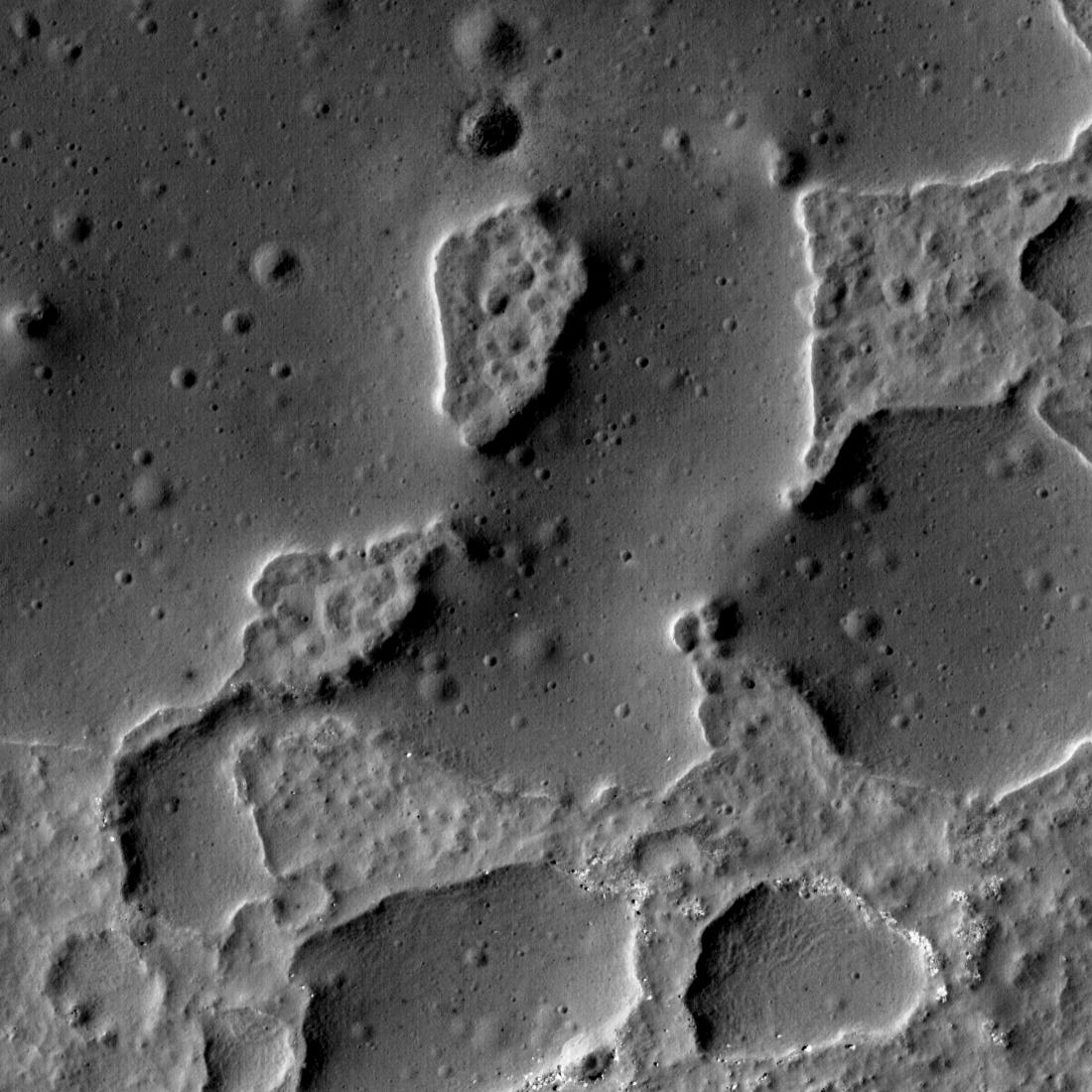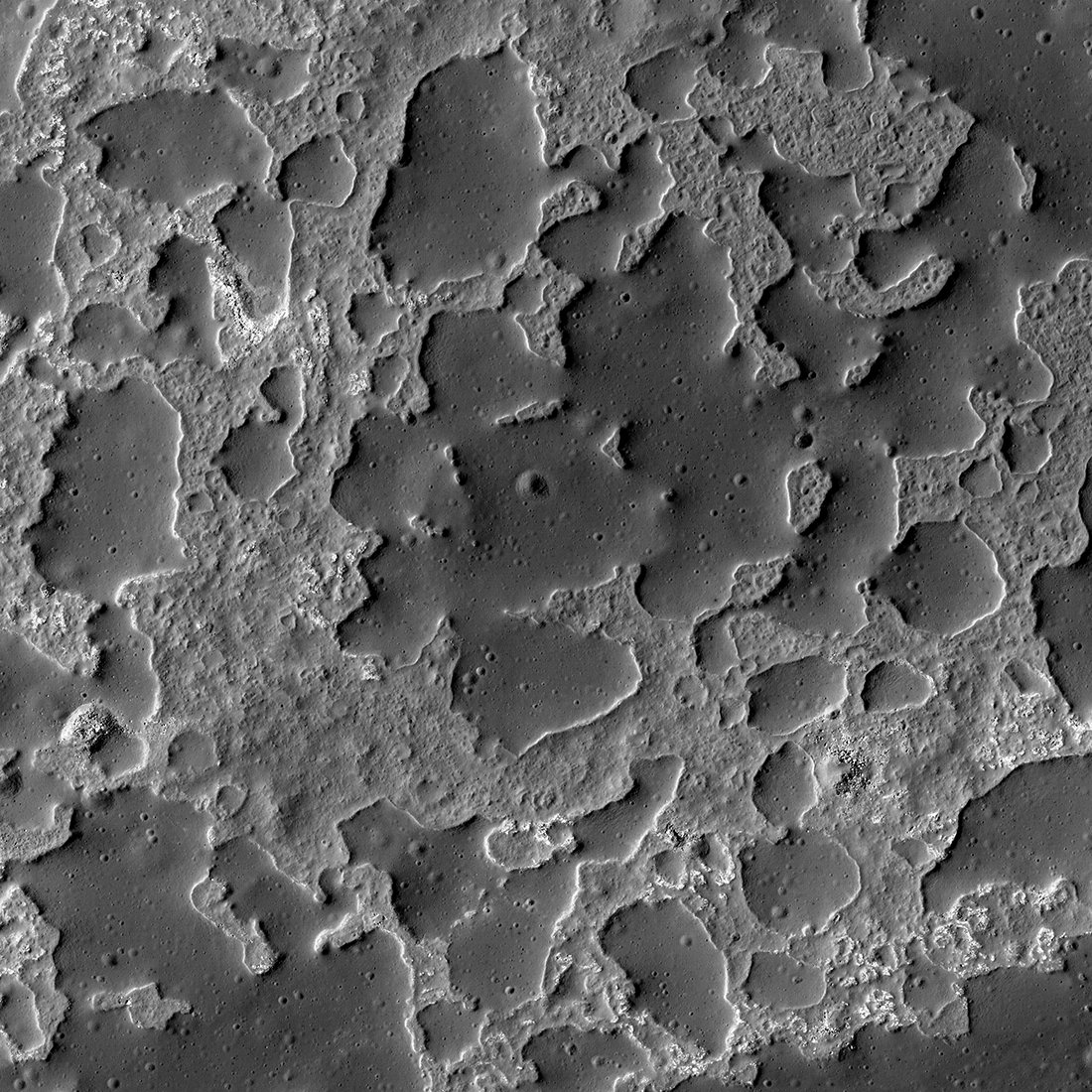
Some scientists propose that Ina formed as very young (less than 100 million years) volcanic eruptions because only a few larger impact craters (>20 m) have formed on its surface. Others believe it is quite ancient (3.5 billion years), possessing highly unusual physical properties that stifle the formation of normal impact craters. At least everbody agrees it was formed as basalt was erupted to the surface! But how and when Ina formed remains open.
Ina's morphology is so unusual that it is easy to see inverted topography - that is, craters appear as bubbles rather than bowls! Think of Ina as a cast iron frying pan with freshly poured pancake batter; the wiggly textured material is the frying pan and the bulbous smoother mounds are the batter (light is coming from the right side of the picture).

Central portion of Ina, 1.36 meter pixels, image is 1500 meters wide, the Sun is shining from the east (right to left, north is up, NAC M175246029LR [NASA/GSFC/Arizona State University].
Why do we sometimes see craters as bubbles (or pancakes as depressions)? The effect is simply an optical illusion, your brain is expecting the lighting from one direction but it is coming from the opposite direction. So, the illuminated depression is seen as a bulge. Try staring at one crater and telling yourself the light is coming from the right, the light is coming from the right... perhaps you can force the bubbles down and see craters instead?
Still seeing inverted topography? Maybe rotating the image 180 degrees so the Sun appears to be shining from the left helps?

Still inverted? Trying flying around Ina. While there, see if you can find any evidence as to how Ina formed, and its age!
Related Featured Images
New Evidence For Young Lunar Volcanism!
Diversity of Basaltic Lunar Volcanism
Age of the Compton-Belkovich Volcanic Complex
Published by Mark Robinson on 20 June 2018